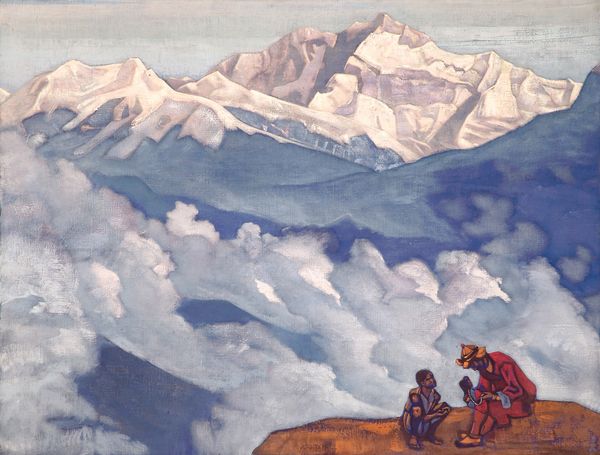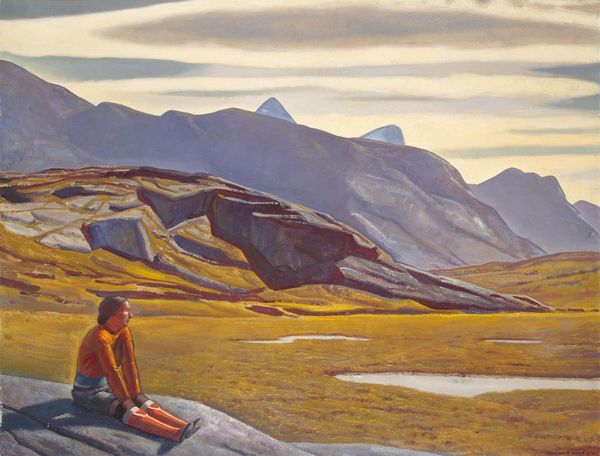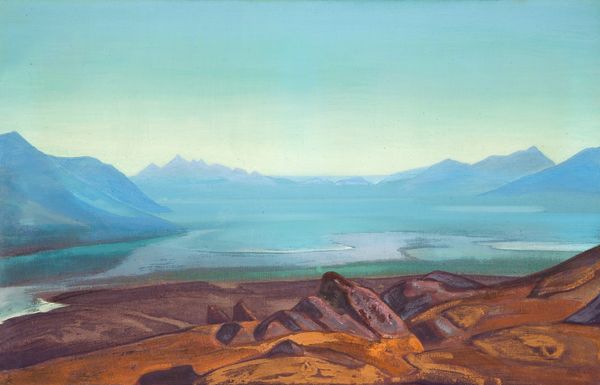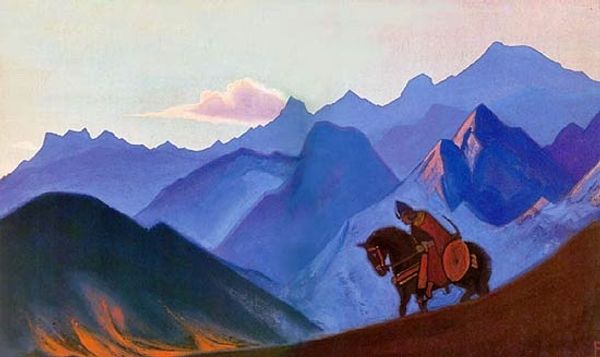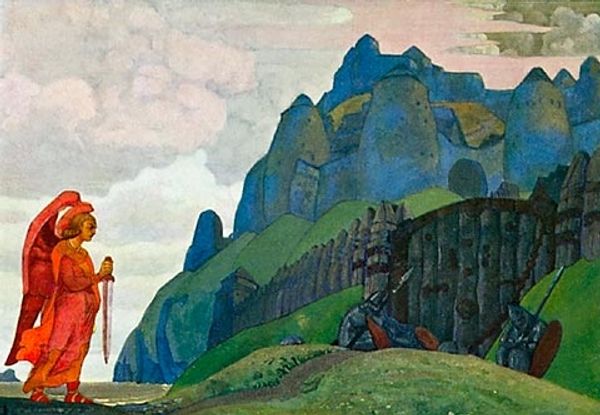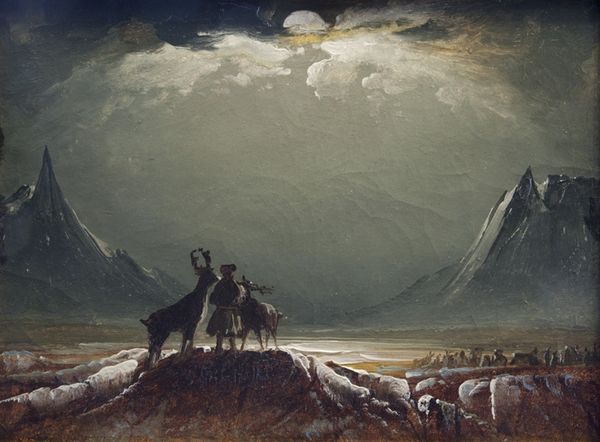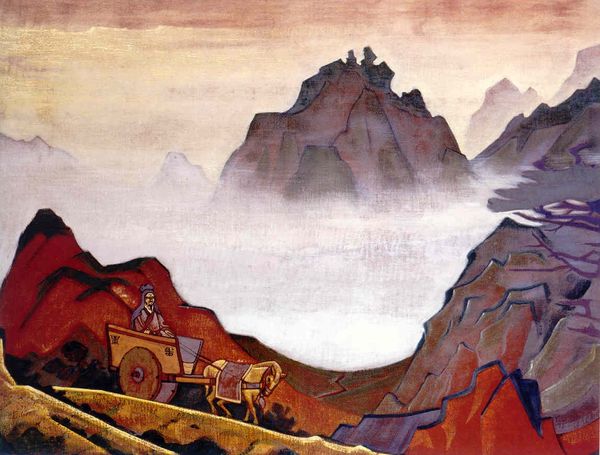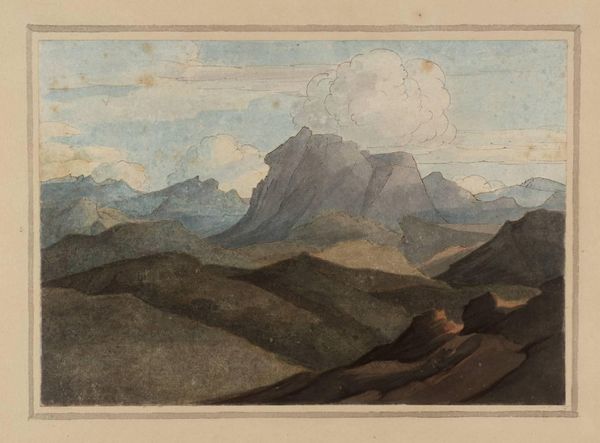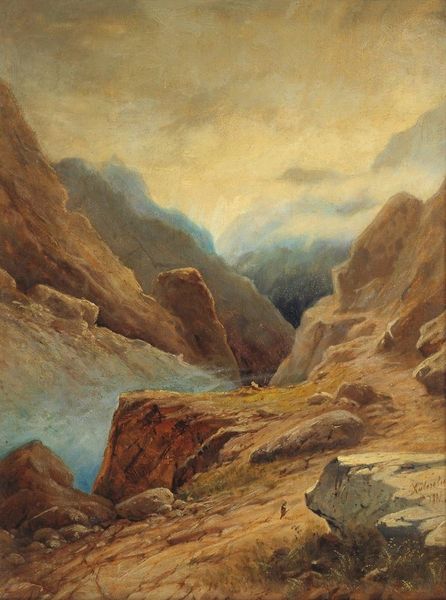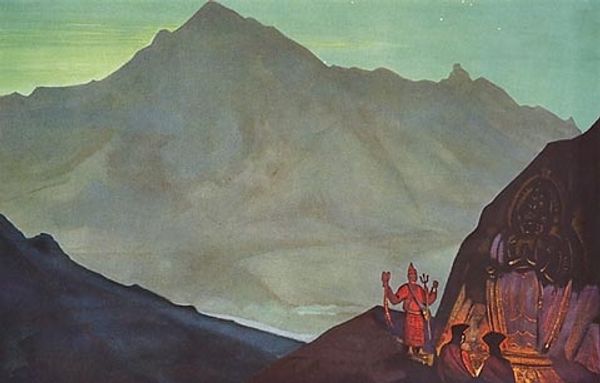
Copyright: Rockwell Kent,Fair Use
Editor: Here we have Rockwell Kent’s "Woman’s Work. South Greenland," painted in 1932, using oil paint. There's something quite stark about it. The figures, almost burdened, contrast sharply with the vast landscape. How do you interpret this work? Curator: Consider the composition. The figures are positioned in the foreground, but they're visually outweighed by the sheer immensity of the mountains behind. The palette is muted, dominated by greys and browns, creating a sense of coldness, of struggle perhaps. It begs the question: does this imbalance contribute to a reading of human existence dwarfed by the natural world? Editor: It certainly feels that way. The women almost blend into the landscape, like rocks or part of the terrain itself. Curator: Exactly. Kent’s brushstrokes, while representational, lack detail in areas such as the terrain and the distant mountains. Notice also how the bundles obscure the women's faces. Is Kent commenting on identity being subsumed by labour and the landscape? Editor: That’s insightful. The anonymity enforces the idea that they represent a collective, perhaps a universal experience of labor within nature. Curator: Precisely. Furthermore, consider how Kent uses light. It's not particularly dramatic; it's diffused, almost oppressive in its uniformity, which adds to the solemnity of the work. The mountain’s sharp peak provides an arresting focal point, contrasting in tone and texture with the rounded forms of the figures. What does that stark contrast suggest to you? Editor: I guess that, beyond the romanticism of landscape, the essence here is labor and its harsh realities in contrast with its environment. I see it now; thank you. Curator: And I observe, afresh, the subtle power in this juxtaposition between figures and their setting. The more subdued elements give the artwork its strong, unique essence.
Comments
No comments
Be the first to comment and join the conversation on the ultimate creative platform.
